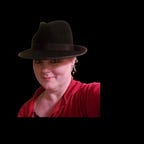4 Things You Can Do To Help Guide Short Story Structure
All stories should contain a guiding structure creating a spine shaping a clear beginning, middle, and end for the reader's satisfaction.
All stories follow a basic story structure with a beginning, middle, and end. It is an innate expectation that we learned in childhood from the first time someone told us a story, fictional or personal, or we read a book or watch a television program or cartoon.
The trick to structuring short fiction is making the most of fewer words to get the story told.
There are many story structure types that work, at least, for the bigger stories over 3000 words. All tangible things have some sort of frame, skeletal form or load-bearing points to support the reality of its existence. This can be literally or metaphorically. It's true for a story too.
For storytellers these are some of the most common forms of structure: The 3 act structure (Act I, Act II, Act III), the 3 act structure with the two-part middle (Act I, Act II part 1, Act II part 2, Act 3), the 5 point plot structure, the 7 point plot structure, story beats and so on, but it is hard to make those work and work well in shorter fiction.
